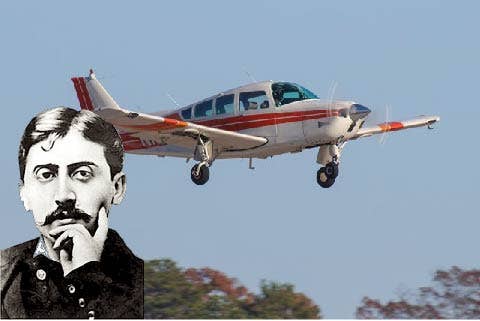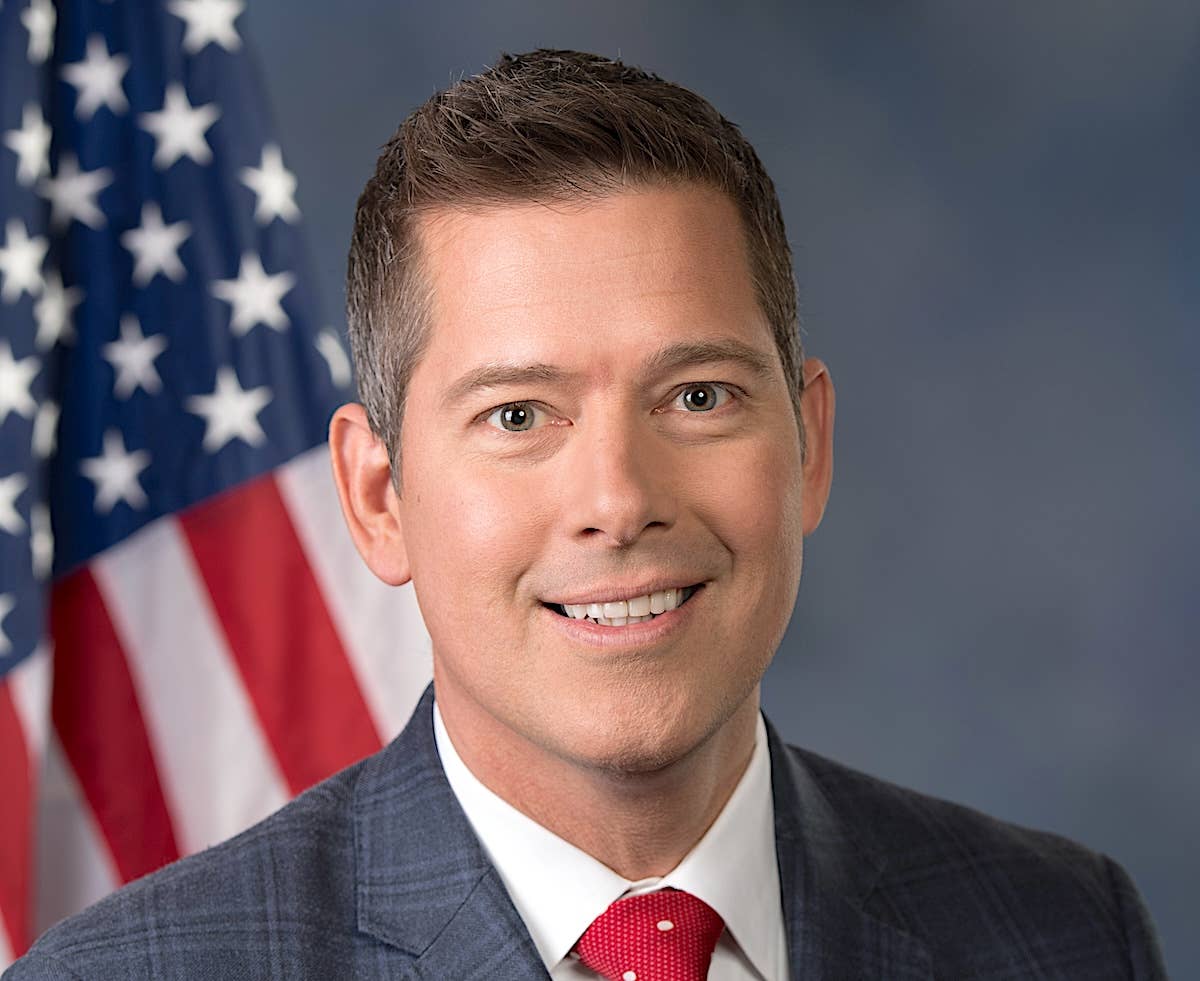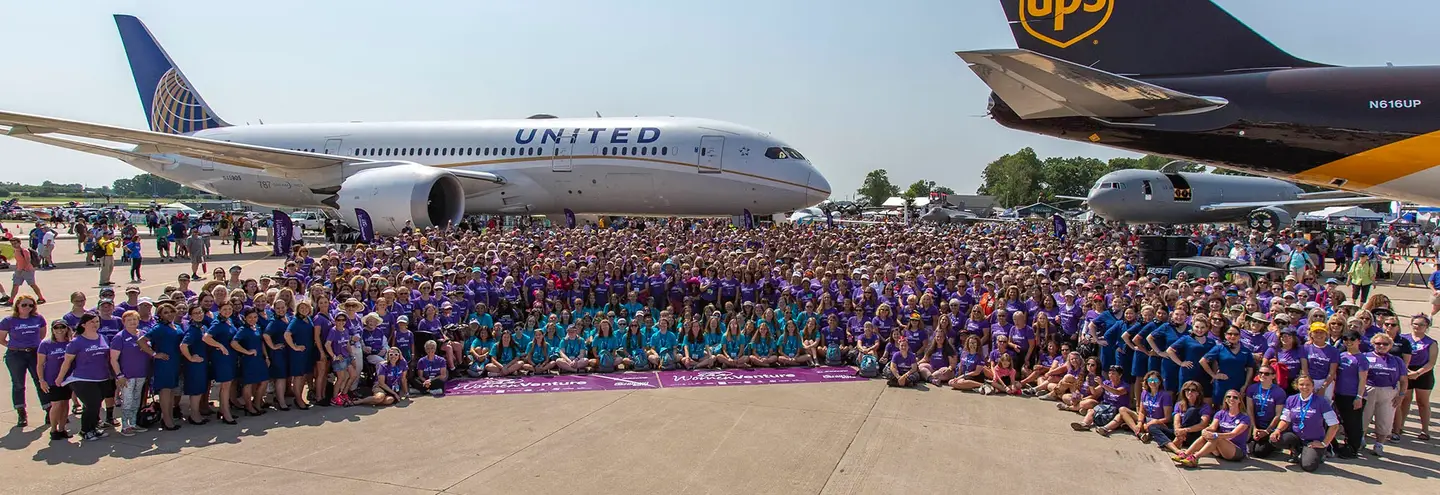Aero Folies Bergère
After a half-century of masquerading as pilot, controller and writer, I’ve concluded that no idea is too silly to fail.

In my underachieving college years, I learned the merit of injecting quotes from collectively admired thinkers into essays, particularly if—as was often the case—I’d never read their works. My go-to source was Marcel Proust (1871 - 1922), whose full name is thirteen French syllables longer but was simply Proust to us loitering in café society. I didn’t learn that Proust had an aviator’s soul until finding his words on an airport cocktail napkin: “We are all of us obliged, if we are to make reality endurable, to nurse a few little follies in ourselves.” Profound napkin advice worth deconstructing.
Nursing little follies is the reactor at aviation’s core from which infinite creative energy spews, inspiring many and destroying a hapless few. That second half of the corollary is the blunt reality that confronted a handful of us, years back, watching an acquaintance perform low-level acrobatics in an ultralight (everything about that folly bodes ill), only to drill into the weeds with crushing finality. Traumatized, we flew home after EMTs had expunged reality and triggered an aviation defense mechanism. We hide uncomfortable realities beneath “probable cause” to shield us from repeating others’ follies. But making reality endurable is ironically why some of us fly. Reality isn’t inherently bad, just frequently inconvenient.
An example of inconvenient reality is mowing your lawn on a sunny day as a Boeing Stearman PT-17 circles overhead, taunting you to look skyward and not at the peonies you’re about to decapitate. By contrast, landing a Cessna 140 on freshly mown grass with a dog in the right seat kicks reality back in its place, if only for the instant needed to savor this glory. Just don’t write, “Dog is my copilot,” when sharing on Facebook.
Follies sprout in all sizes but don’t necessarily imply failure. Examples: Engineers glean wads of useful data from rockets exploding in the Texas sky, as the rest of us squander hours of office life watching on YouTube. In the annals of aviation folly, it’s unclear what Mooney learned from its 1960s pressurized Mustang faceplant or more recently, Cessna from its LSA Skycatcher bellyflop. Both projects glistened in someone’s av-fantasy but were derided like Yankees fans in Boston when reality struck. Occasionally if reaching for the stars, you’ll get a fistful of nothing —unrelated to the 1964 Clint Eastwood film.
In 1970, Beechcraft pursued folly with its Sierra (24R), a complex version of the Beech Sundowner (C23), possibly the dullest airplane ever. Before the Debbie Sundowners harrumph indignation, I’ll sidestep by noting I’ve logged a fair amount of Sierra time, getting my commercial and instructor certificates. Good airplanes, despite Aviation Consumer labeling Sierras “one of the slowest retractables you can buy.” Tough love for Bonanza’s half-sister.
From that mixed bag in the 1980s, Beech explored Burt Rutan designs and introduced the Starship, a name that lives in infamy. Here’s the thinking: Put the tail in the front, engines in back, rudders on wingtips, then price the oversized VariEze a million over a Piper Cheyenne and watch customers swarm your showroom, like villagers attacking Dr. Frankenstein for unleashing his monster. Beech should’ve sensed folly after another aviation great, Jefferson Airplane, had morphed into Jefferson Starship in 1974. (Ask your grandparents. Better yet, go ask Alice. Or ask Elon Musk why his exploding rocket was also called Starship.)
Little follies aren’t limited to bit players. Boeing and the FAA frequently jump reality sharks to wade onto absurdity’s shore. While past performance is no predicter of future chagrin, let’s consider what’s inbound from these two creative giants.
In 1916, Pacific Northwest lumberman William E. Boeing entered the airplane manufacturing business, because he thought putting wings on boats would be fun (it is), and airplanes could be made of wood, of which he controlled a bunch. Over the next century Boeing became less associated with timber and achieved immense success with aluminum, composites and cramped seats.
At Boeing innovation never sleeps, lest it awaken in the trunk of an Airbus in New Jersey, so Boeing teamed with NASA to develop a transonic (roughly Mach 0.8) design that should prove both efficient and amusing by invoking the past with a strutted high-wing design to make Skycatcher owners crow, “Told you struts would be back.” The high vs. low-wing debate is as old as pilot lounge philosophizing, but it’ll be interesting to watch airlines take the bait. If it proves to be folly, they’ll sell the airplanes to skydiving clubs for jumpers who love to climb on struts far above the planet. No folly there.
Where Boeing takes risk with strutted wings, I believe the FAA gambles nothing in its bold plan to replace outmoded air traffic control towers with a “sustainable design … that will,” per its press release, “be used primarily at municipal and smaller airports.” I’m based at a “smaller airport,” where any control tower would be unwelcome. Nevertheless, sustainability elements include “materials and products free from chemicals known to pose health risks.” When I was a controller, the FAA wasn’t concerned about ubiquitous cigarette smoke, so there’s progress, I guess.
Future towers will “have standardized elements to reduce construction and operational costs while allowing for the building to be tailored to local (needs).” Additionally, “high-recycled steel and metal products” will blend aesthetically with “renewable mass timber when usable.” I’m picturing a recycled crate from which controllers remove the tower kit to assemble late Christmas Eve using an enclosed Allen wrench and a box of IKEA zinfandel. No folly to see here, folks.
Between “renewable mass timber” control towers colonizing “smaller airports”—reminiscent of Bronze Age Greeks sneaking a wooden horse into Troy—and reintroducing airliners with strutted wings, aviation is headed back to the future. I approve and predict that radial engines will also make a comeback, because nothing distracts pilots from the suburban reality of lawn mowing better than the oily clack of seven cylinders tugging a Boeing airframe overhead. Skeptics might ask if such folly is good for aviation, to which Duke Ellington—who never graduated college—replies, “If it sounds good, it is good.”






